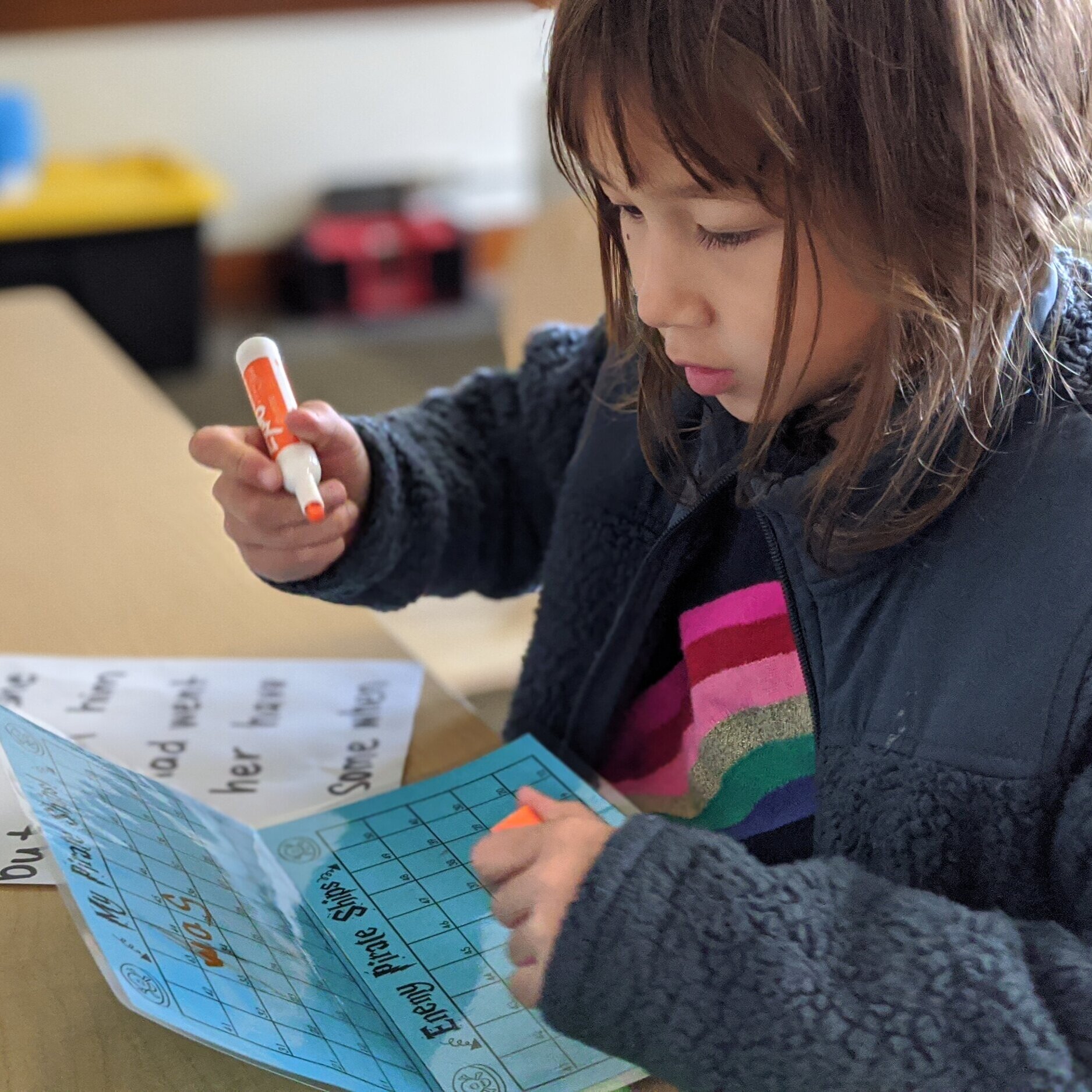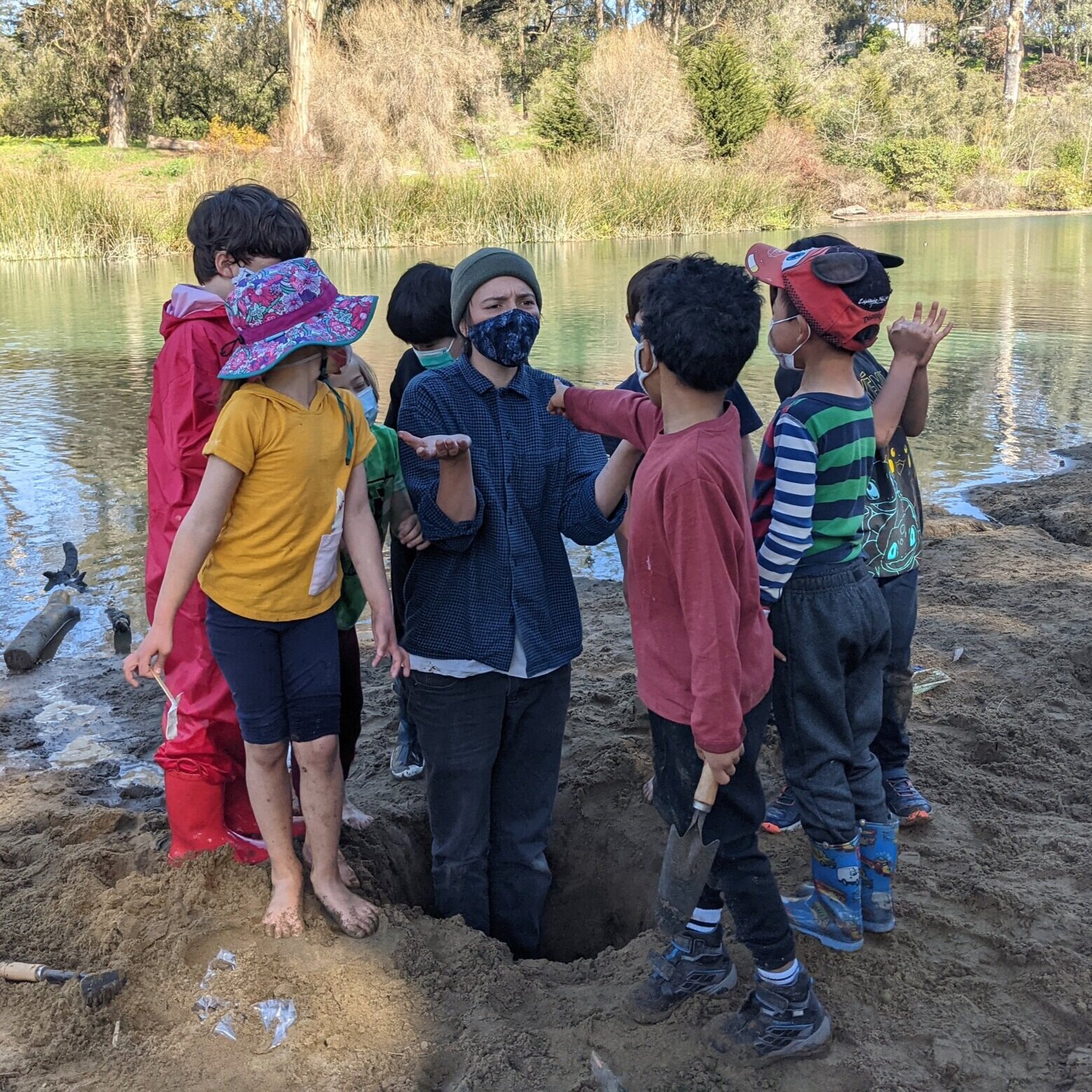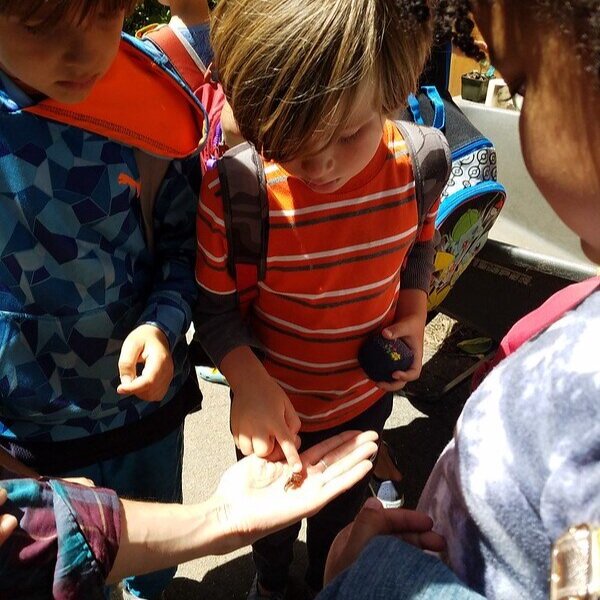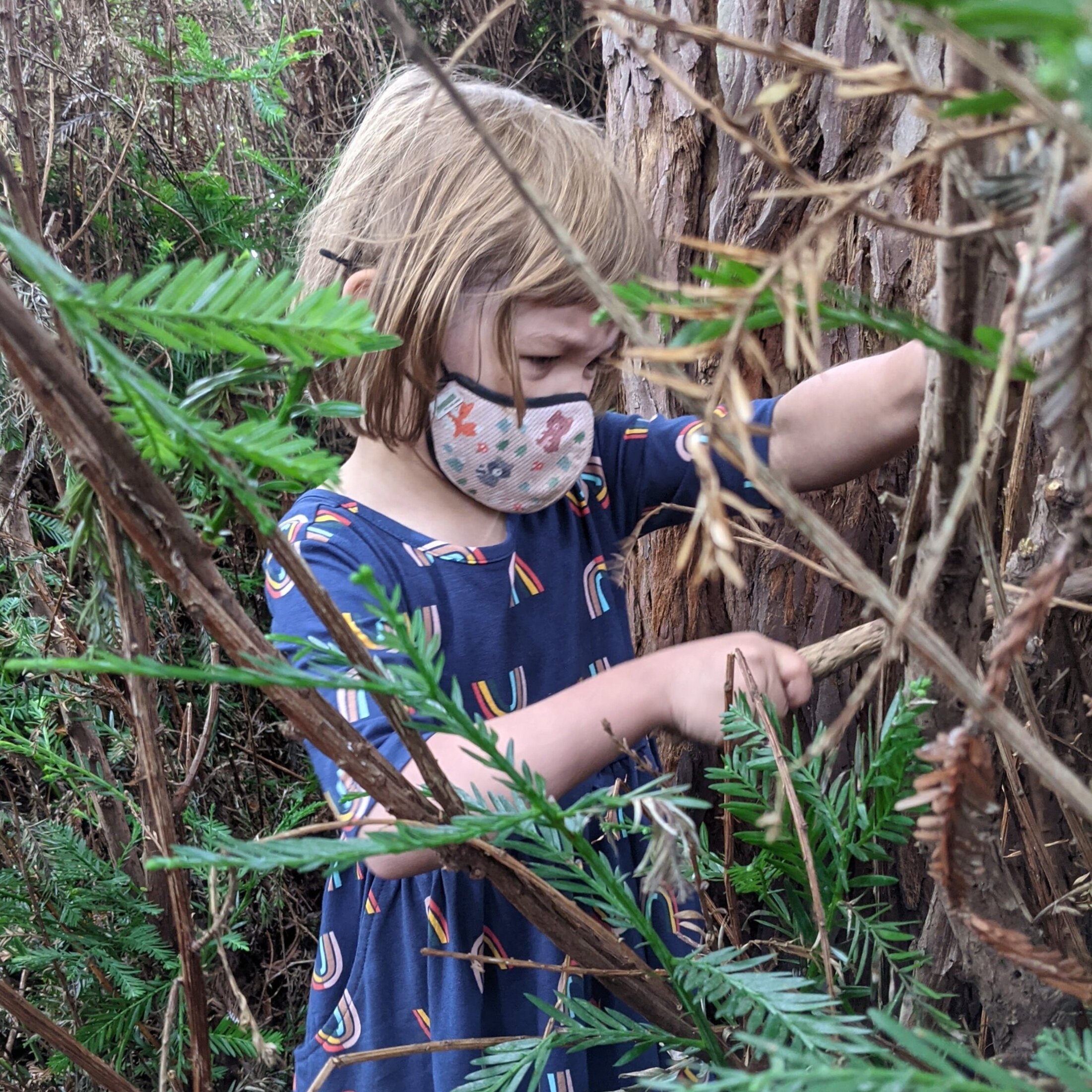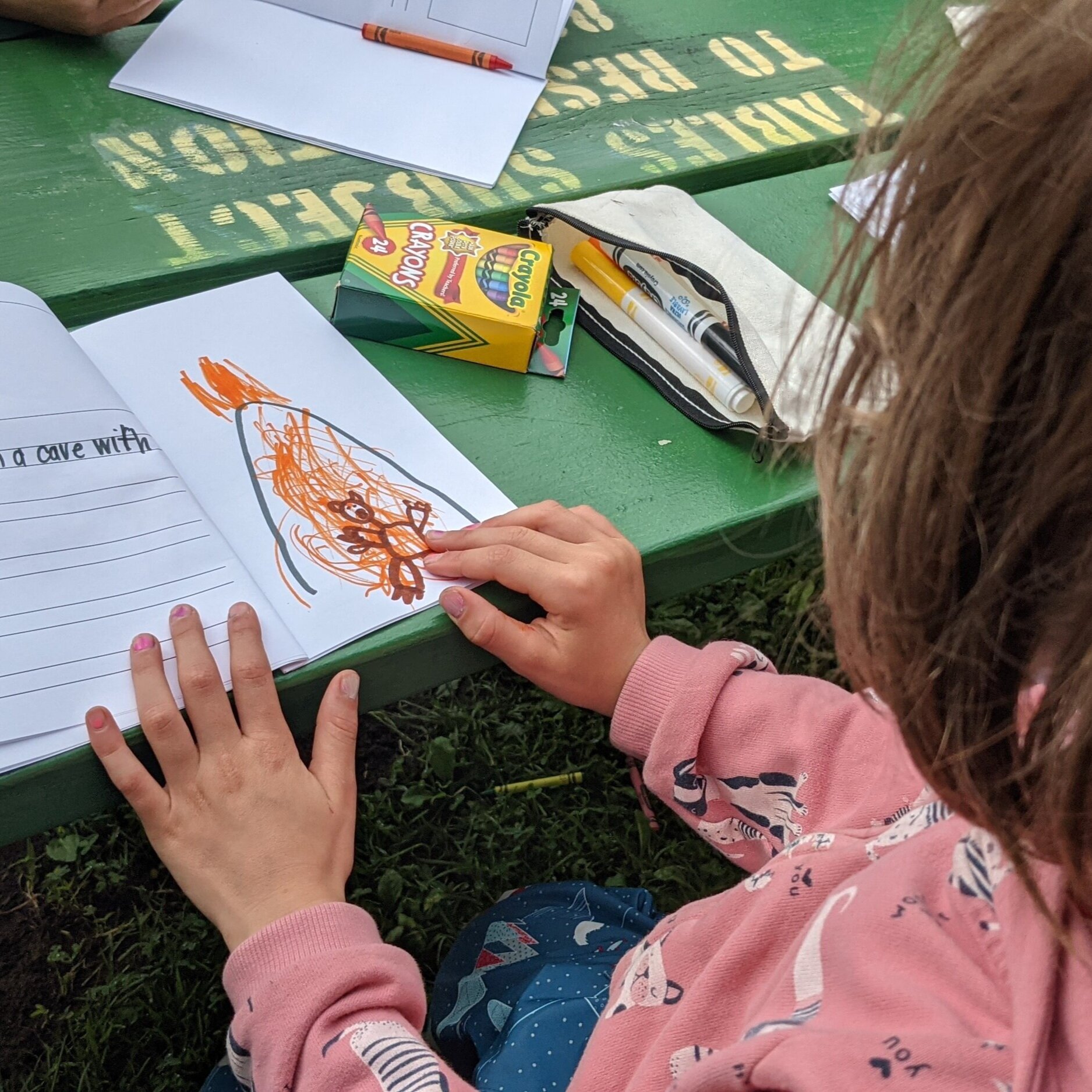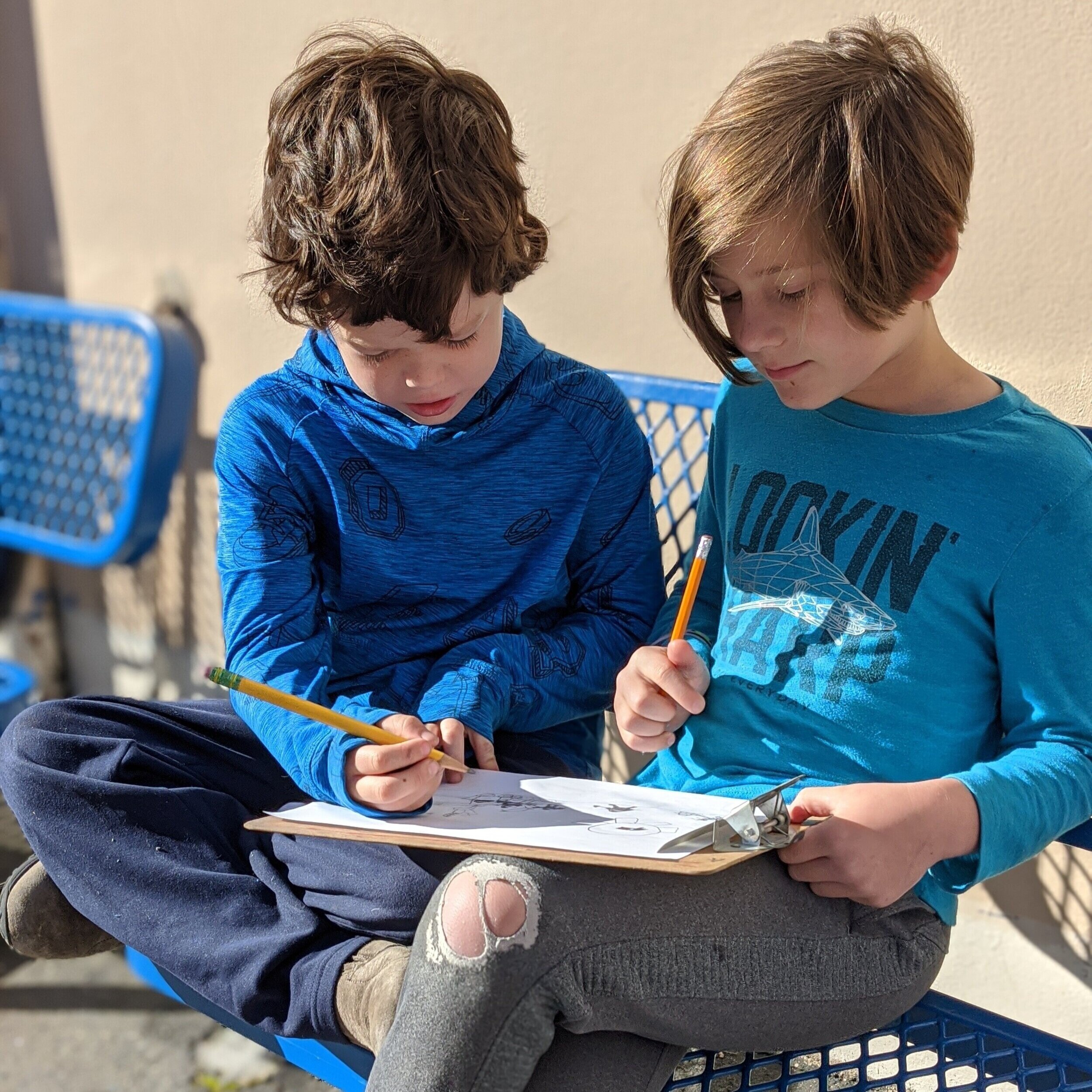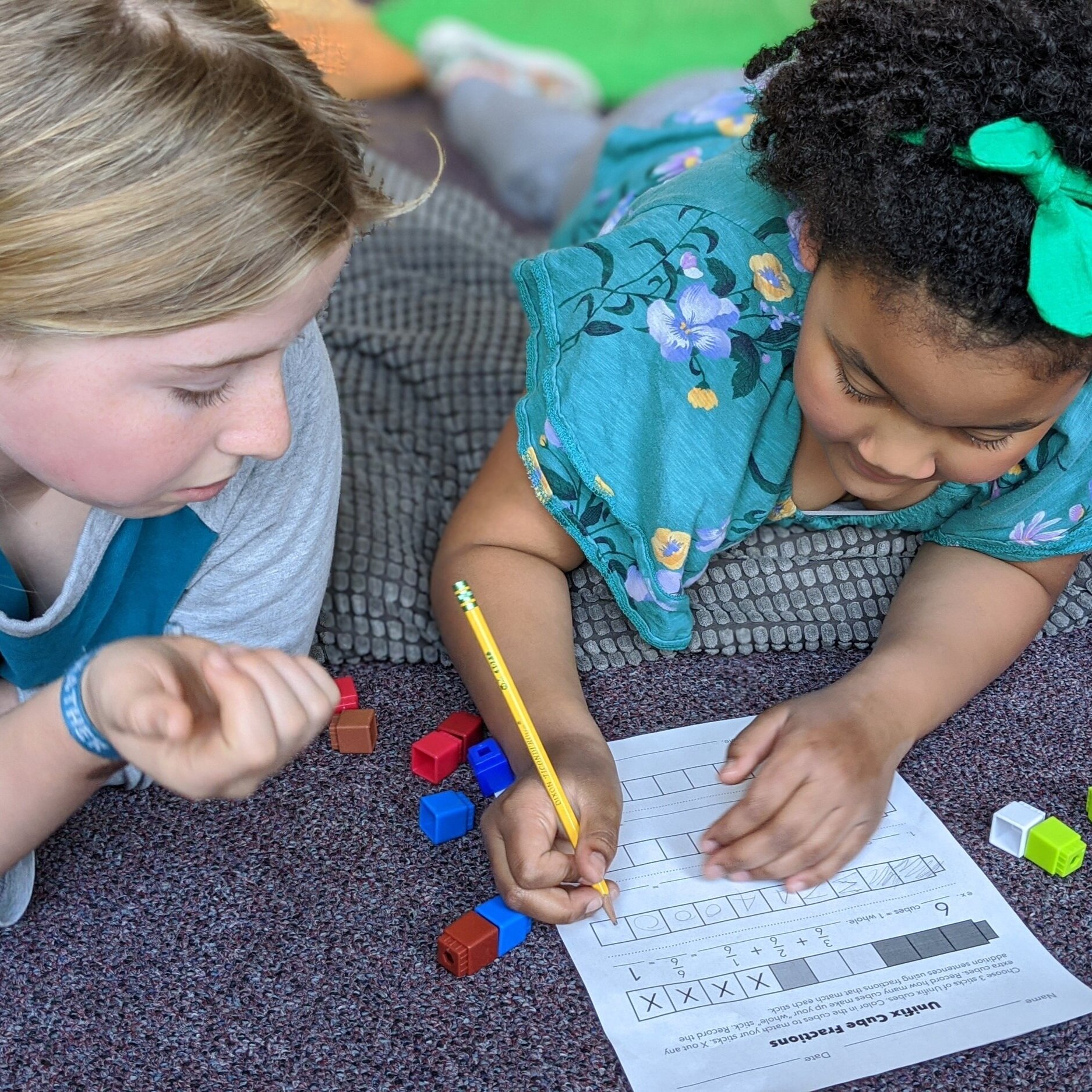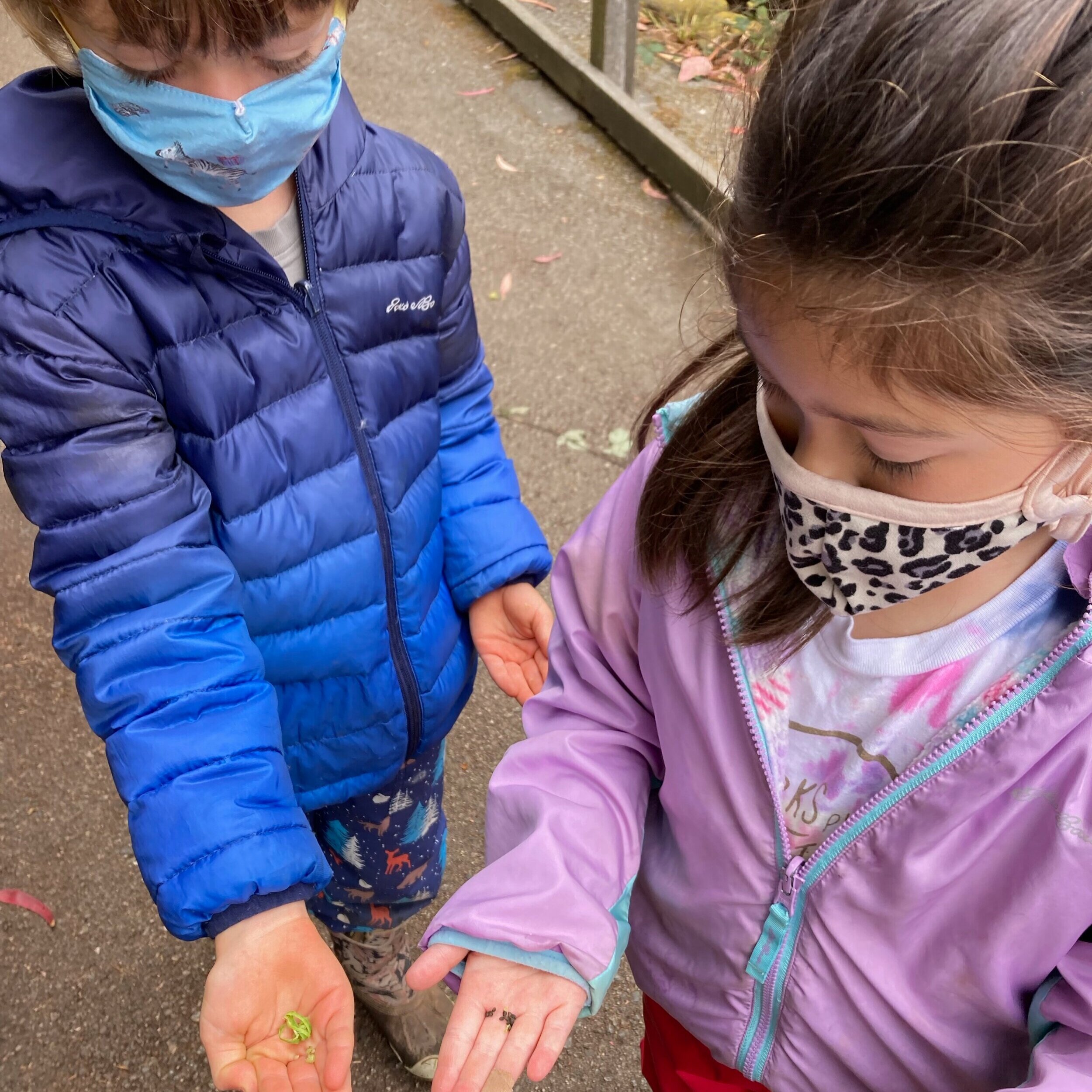Early Elementary Program
Brightworks’ integrated curriculum is a dynamic approach that allows students to pursue learning in a holistic way, without the restrictions often imposed by subject boundaries.
We ensure that our school is ready for children, versus children needing to be “ready for school.”
Often lost in a traditional program are student agency, the ability to make connections, the importance of collaboration, nuanced communication and problem solving skills.
At the early elementary level, Brightworks uses neuroscience and educational research as its guide to holistically develop future-ready students who have the knowledge, skills attitudes and values to succeed.
Academics are embedded into the experience and learning is documented
In the water arc, we made tin foil boats and predicted how many pennies it would take to sink them, then we tested it out. William’s boat held the most pennies before sinking: 82!
In the early elementary years, we document learnings to provide a record of process, reveal connections between events, review past experiences, plan future experiences, and make learning visible to children and families. Documentation is in the form of dictation, art, photography, video or observation notes.
Documentation functions to identify a child's strengths and thinking at the time. Teachers use these findings to scaffold each child's learning.
Over time, we track general learning expectations for our students and share this information with parents in family conferences throughout the year. Ultimately, our goal is to foster natural curiosity and the ability to make connections between each traditional subject area in a playful, interdisciplinary way.
Building curriculum aligned skills through exploration
Play-based learning is essential to learning, yet it is often neglected in favor of academic-focused education approaches. In this period of development, active, play-based learning approaches can transform the educational experiences of children and strengthen learning motivation and outcomes.
Here is how we do it:
We start with a theme.
We explore ideas, examine relevant materials, and experience it firsthand.
Collaborators bring in provocations, stories, books, experts, writing challenges, science experiments and numeracy exercises that harness students curiosity to simultaneously build skills and deepen the student’s understanding of the theme.
Students and Collaborators work together to create something for the community that shows their learning.
We share the student’s project with the community.
This dynamic allows children to be active agents and composers of meaningful learning experiences, while Collaborators support and guide children to become conscious of their own learning.
Early Elementary Outcomes by Subject
Outcomes by subject serve as landmarks to reference along the learning journey.
Click each below to learn more about each:
-
Words open worlds to students. We make time every day to gain new skills and strategies for writing, reading, and learning about history and people’s experiences. In readers’ and writers’ workshops, students not only learn to love the written word but they also build strategies to increase their independence as readers and writers.
In our Early Education program, learners begin to recognize letters and sounds, decode and sound out new words, and begin to use reading strategies to read aloud with fluency and accuracy.
Read a variety of books on diverse subjects from a variety of sources and authors that inspire creative thinking about big ideas, questions, and elements of story, and be able to connect to the content with their own experience
Use writing, drawing, and best-guess spelling to tell stories about themselves, what they observe, or made-up characters and experiences
Share opinions and ideas with fluency, and be able to retell a story or repeat information from a previous conversation
-
Explore and understand “Who am I? Who Are You? Who Are We? How can we learn together? How can I be a friend in this community?” through stories, positive vocabulary around similarities and differences, appreciation for all identities that students bring into the community
Using a diverse selection of media, explore and understand the differences between self and others, and between many cultures, peoples, and environments change-makers, community contributions, ways that individuals can make a difference in people’s lives through storytelling and discussion
Explore stories of how people have been treated badly because of their group identities, and stories of people who helped stop unfairness and worked to make life better for many people
-
Math and science should be collaborative, creative, playful and, when possible, contextualized in a project. We draw inspiration from researchers such as Constance Kamii and Jo Boaler to create highly visual and manipulative-based math provocations.
As natural observers of the world, young learners observe and play instinctually, experimenting with science concepts almost as a second nature. Collaborators help guide this energy toward solving problems and achieving goals, and help students reflect on their process.
Scientific Fluency
Using hands-on methods, real materials, and fieldwork, make observations and recordings (writing or drawing), and asks questions about how the physical and natural world works
Recognize patterns and formulates answers to questions about the world around them
Discuss and share facts about ecosystems in the natural world, the rules of how things move, and climate, as well as care for the environment
Mathematical Thinking
Use numbers and mathematical thinking in collaborative, creative, playful ways, and when possible, contextualized in hands-on projects and provocations
Use hands-on materials to understand numbers and what they represent, and become comfortable with addition and subtraction
Use visuals and hands-on materials to create and recognize patterns, measure objects, and recognize and use shapes to describe the physical world
-
Engineering and Arts
Engage and play with a variety of materials to create works of art and practice self-expression
Use a variety of natural and manufactured materials to build, experiment, design, and prototype
Illustrate ideas of how to solve problems with a sketch, a combination of art and writing, or physical model
Ask questions, make observations, and gather information about how to solve a problem with a new object or tool


